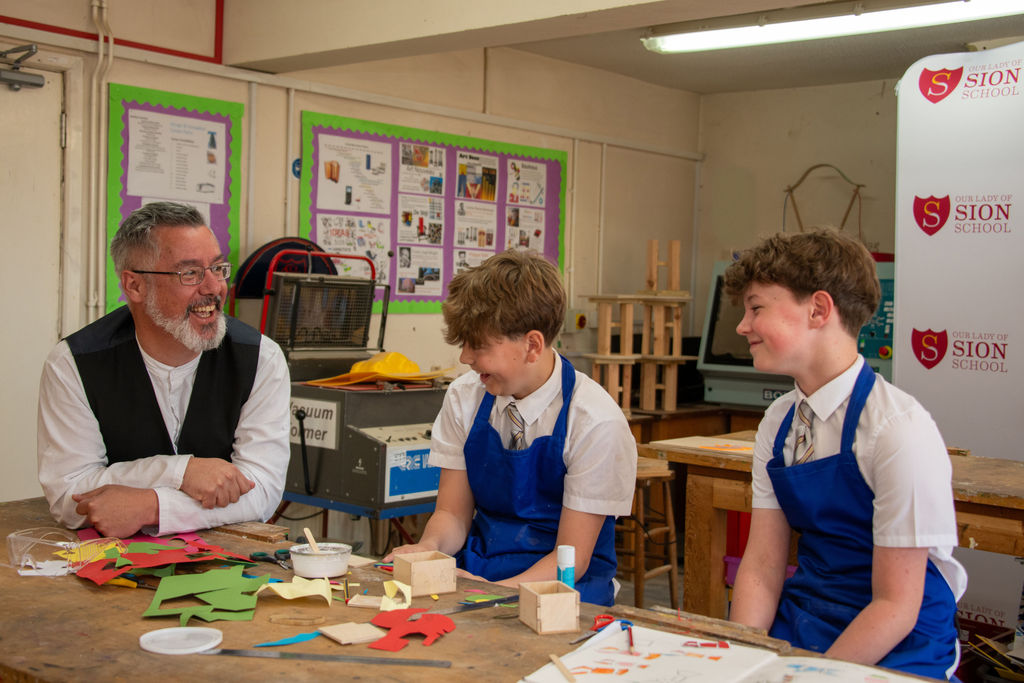When choosing the right school for your child, one of the most significant factors to consider is class size. At Sion School in Worthing, we pride ourselves on offering genuinely small class sizes compared to local state provision, and some other independent schools.
But what does this truly mean for your child’s education, personal growth, and day-to-day school experience?
Are Small Class Sizes Better?
The short answer is yes, and for many reasons. Smaller class sizes allow for more personalised teaching and learning, stronger relationships between students and teachers, and a more supportive learning environment. At SION, this translates into each child being truly known, heard, and understood.
Small class sizes foster a deep and genuine connection with each child. Subtle details are noticed, natural conversations flourish, and the dynamic between teacher and pupil becomes a true partnership built on mutual respect, understanding, and a shared appreciation for one another.
With a smaller class size, teachers can tailor their approach to suit individual learning styles, identify strengths and areas for growth more quickly, and provide timely, meaningful feedback.
This level of attention helps children thrive, not just academically, but socially and emotionally, too.
It also allows classroom content to be delivered more efficiently, with time for reinforcement and deeper understanding, ensuring no child is left behind.
Average Class Sizes: National and Local Context
According to the latest government data for the 2024/25 academic year, the average class size in England is:
- 28.4 pupils in infant classes Infant (Reception plus KS1)
- 29.4 pupils in Key Stage 2 (Years 3 to 6)
- 30.1 pupils in Secondary (Years 7 to 11)
In West Sussex, class sizes and the impact of class size in state schools tend to reflect or slightly exceed these national averages, especially in areas where demand for school places is high.
By contrast, SION maintains significantly smaller class sizes, often ranging between 12 and 18 pupils per class. An even smaller class size would be Design Technology or Food and Nutrition, where health and safety is a priority. This difference is not just a number, it’s a fundamental shift in how education is delivered.
A Close-Knit Community
Smaller class sizes create a close-knit, family-like atmosphere where every child feels safe, valued, and confident to express themselves. At SION, this sense of community extends beyond the classroom. Children here form strong friendships across year groups, and staff know each child by name, not just their academic record, but their interests, talents, aspirations and individual quirks – the things that make them, them.
This nurturing environment is especially important in today’s world, where children face increasing pressures both in and out of school. At SION, we believe that emotional wellbeing is the foundation not just for academic success, but personal growth.
Teaching Outside the Box
With fewer pupils per class, our teachers have the flexibility to go beyond the constraints of a conventional, government-controlled curriculum. SION’s independent curriculum allows for more creative, hands-on, and outdoor learning educational experiences. Whether it’s science experiments in the school courtyard, writing poetry inspired by the sea (whilst sat beside the sea), or engaging in real-world problem-solving, our pupils are encouraged to think critically and creatively.
This approach not only makes learning more engaging but also helps children develop the skills they’ll need for life beyond the classroom: resilience, collaboration, curiosity, and confidence.
Nurturing Potential
One of the most powerful benefits of a smaller class is the ability to spot and nurture potential early. Whether a child shows a gift for music, a flair for maths, or a passion for the environment, our teachers have the time and insight to help them grow.
When there is an authentic connection between a young person and their teacher, something powerful happens. The teacher becomes attuned to the child’s unique interests, affinities, and emerging passions. Young people are always communicating with us, sometimes directly through their words, but often more subtly through their behaviour, body language, and choices. In smaller classes, these quieter signals are far less likely to be missed.
With fewer pupils to support, teachers have the time and space to truly see each child, noticing the small but meaningful details that can be overlooked in larger settings. These observations form the foundation for deeper engagement, more personalised support, and a richer, more responsive educational experience.
At SION, we don’t believe in a one-size-fits-all education. We believe in helping each child discover and develop their unique talents. That’s why our young people go on to succeed in a wide range of fields, from the arts and sciences to business and beyond.
Headteacher’s Note
Choosing a school is one of the most important decisions you’ll make for your child. At SION, our smaller class sizes are more than just a feature, they’re a pillar of our educational philosophy. They allow us to offer a more personal, flexible, and enriching learning educational experience that helps every child flourish.
If you’d like to see the SION difference for yourself, we warmly invite you to visit us and experience our vibrant, supportive community in action.



